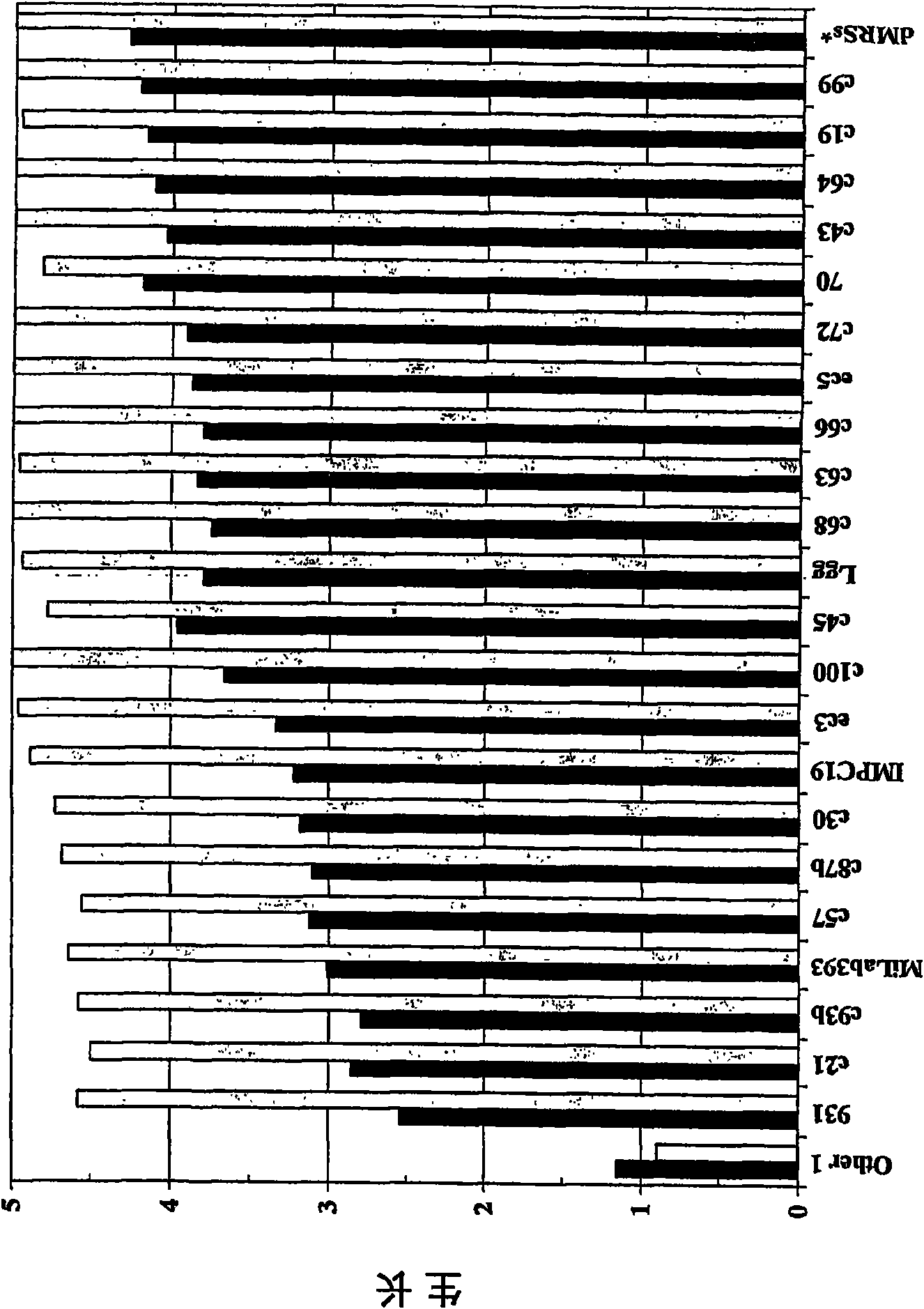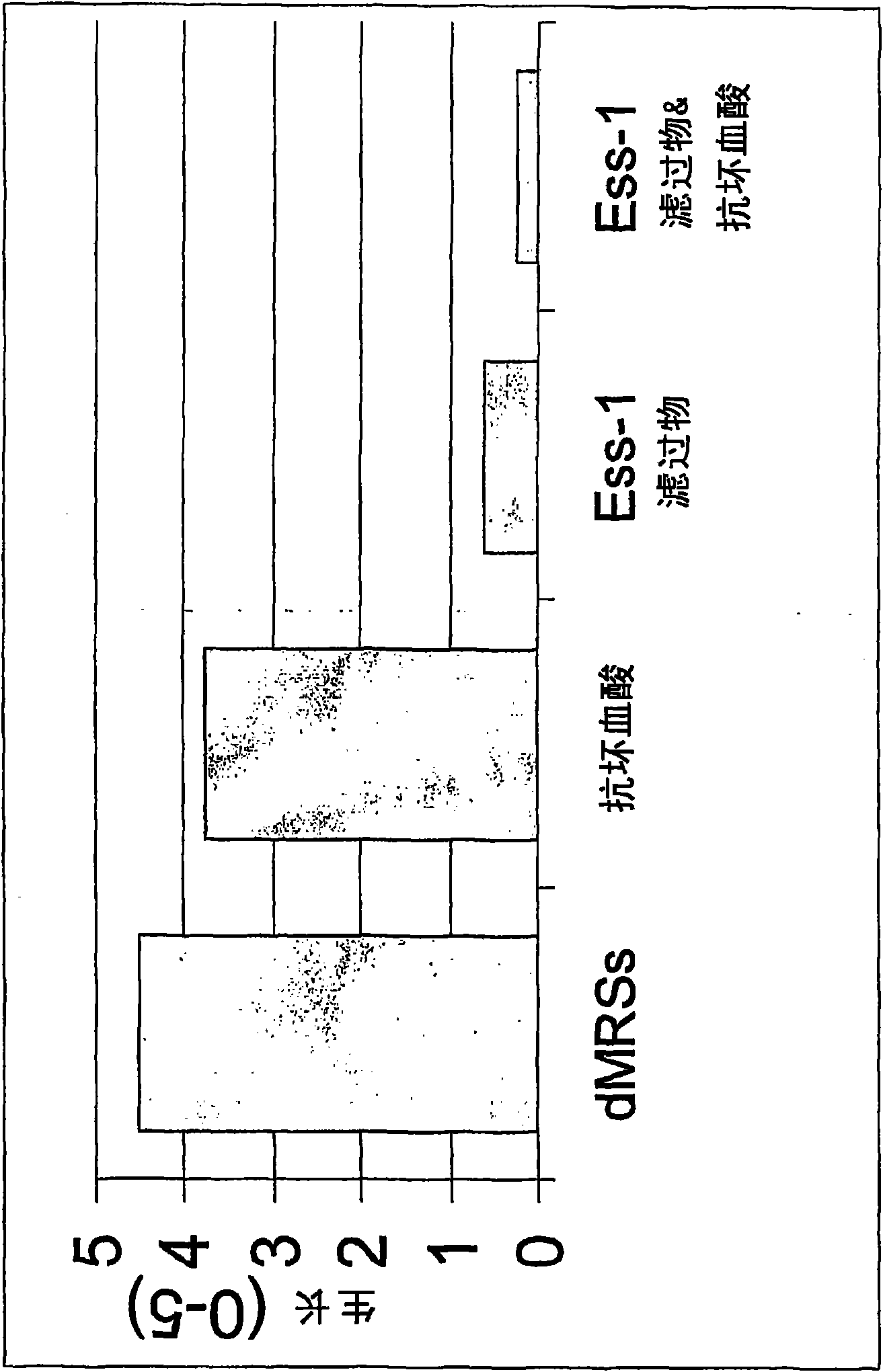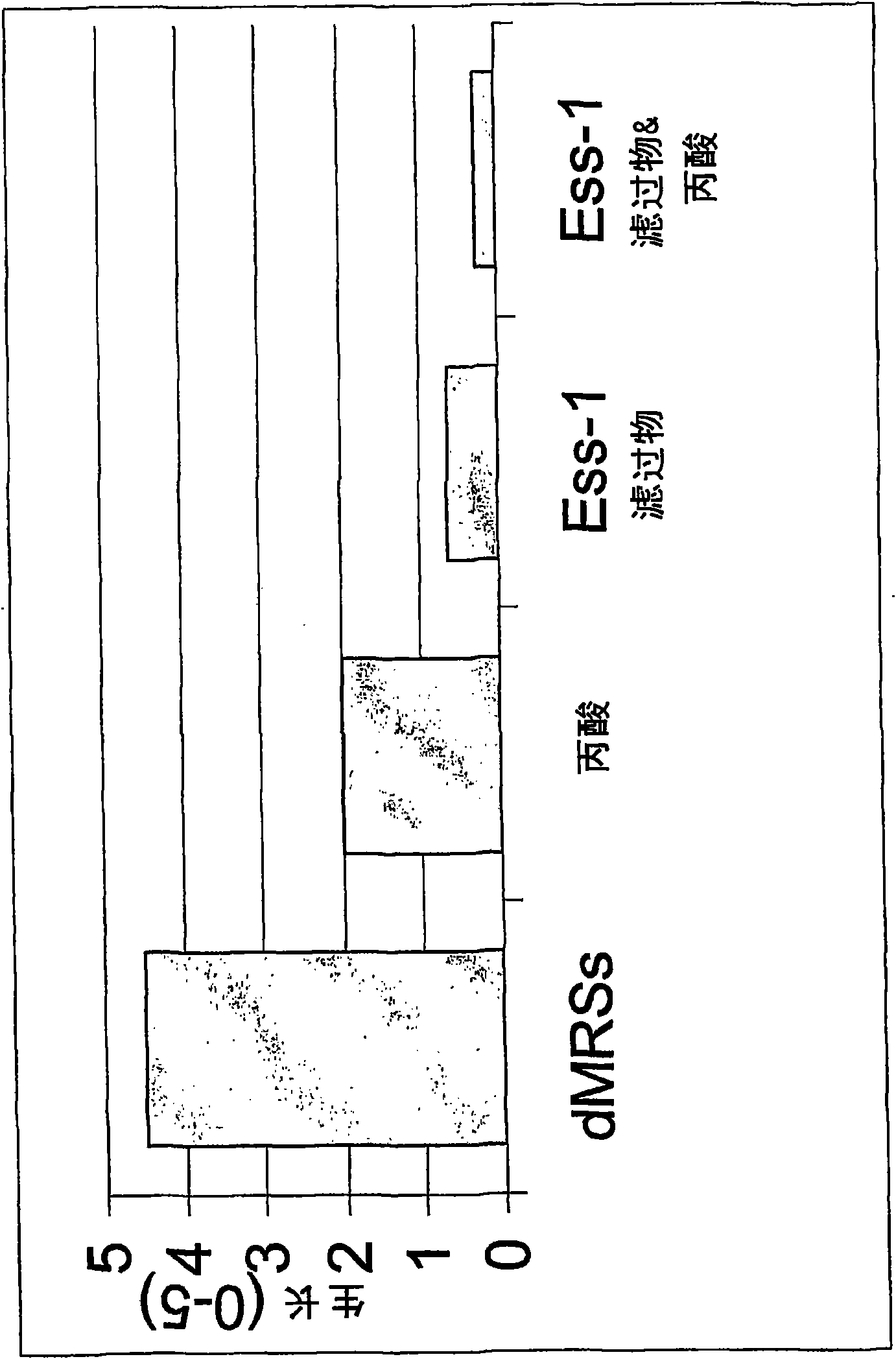Lactobacillus fermentum ess-1, dsm17851 and its use for the treatment and/or prevention of candidiasis and urinary tracrinfections
A technology of DSM17851 and Lactobacillus fermentum, applied in the field of probiotics, can solve problems such as limited success of vaginal candidiasis
- Summary
- Abstract
- Description
- Claims
- Application Information
AI Technical Summary
Problems solved by technology
Method used
Image
Examples
Embodiment 1
[0069] Example 1: Isolation and typing of Ess-1
[0070] Purpose
[0071] The initial aim of this study was to isolate and type Lactobacillus strains that inhibited the growth of C. albicans and C. glabrata to a greater extent than other Lactobacillus strains.
[0072] method
[0073] yeast strain
[0074] Clinical isolates of C. albicans and C. glabrata were used as test strains. These strains were isolated from the vaginas of women with vaginal candidiasis and healthy women.
[0075] Screen I
[0076] Approximately 140 Lactobacillus strains derived from human skin, throat, teeth, infant feces, vegetables and seeds were grown in MRS broth and streaked on MRS agar plates. The agar plates were incubated at 37°C under anaerobic conditions. Additionally, SAB (Sabouraud) agar (LAB M, Bury, UK) was poured over the MRS agar and allowed to solidify. A culture of Candida albicans was inoculated on this agar, and the plate was incubated anaerobically at 37°C. Inhibition was ass...
Embodiment 2
[0091] Embodiment 2: heat treatment
[0092] Purpose
[0093] The purpose of this experiment was to study the heat resistance of Candida growth inhibitory substances produced by strain Ess-1.
[0094] method
[0095] The LCF was heat-treated at 90°C for 20 minutes. Add Candida albicans and Candida glabrata to a final concentration of approximately 5 x 10 4 CFUml -1 . The plates were incubated at 37°C for approximately 20 hours and the vials were visually assessed for Candida growth and graded from 5 to 0. The plates and vials are as above.
[0096] result
[0097] The heat-treated filtrate of strain Ess-1 was equally successful in inhibiting yeast growth compared to the untreated filtrate used as a comparison. Therefore, heat treatment of the filtrate does not destroy the active substances of this bacterium.
Embodiment 3
[0098] Example 3: Inhibition of Candida albicans with LCF by adding salt and acid
[0099] Purpose
[0100] The aim of this study was to determine whether salt and acid affect the growth of Candida and whether an improvement in growth inhibition could be achieved when added to the LCF of strain Ess-1.
[0101] method - salt
[0102] LCF aliquots were pH adjusted to the pKa value for each salt and air dried until completely dry before resuspension in 0.3% sodium acetate and sodium propionate. Add Candida albicans to a final concentration of approximately 5 x 10 4 CFU / ml. Fractions were incubated at 37°C for 20 hours. Inhibition was assessed by visual turbidity and graded by two people using a template from a 5 to 0 scale. Wells with robust growth of Candida in pure dMRSs broth were graded 5, whereas wells with no observed growth were graded 0.
[0103] method - acid
[0104] Add succinic acid, acetic acid, propionic acid, and ascorbic acid to the tube containing LCF to a...
PUM
 Login to View More
Login to View More Abstract
Description
Claims
Application Information
 Login to View More
Login to View More - R&D
- Intellectual Property
- Life Sciences
- Materials
- Tech Scout
- Unparalleled Data Quality
- Higher Quality Content
- 60% Fewer Hallucinations
Browse by: Latest US Patents, China's latest patents, Technical Efficacy Thesaurus, Application Domain, Technology Topic, Popular Technical Reports.
© 2025 PatSnap. All rights reserved.Legal|Privacy policy|Modern Slavery Act Transparency Statement|Sitemap|About US| Contact US: help@patsnap.com



